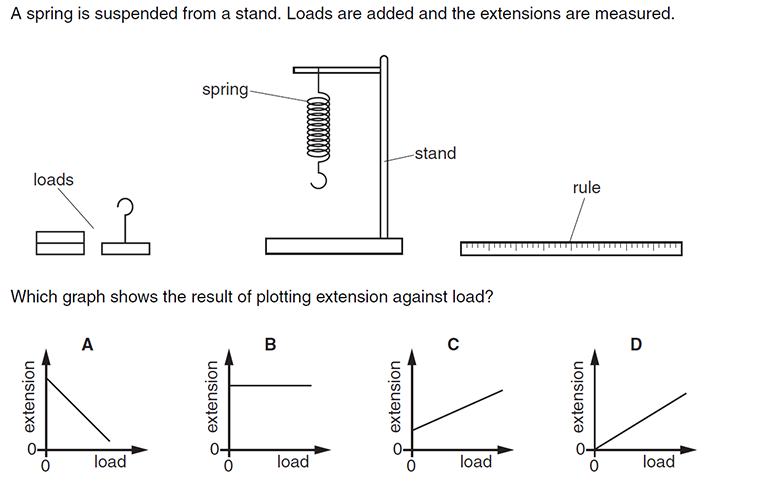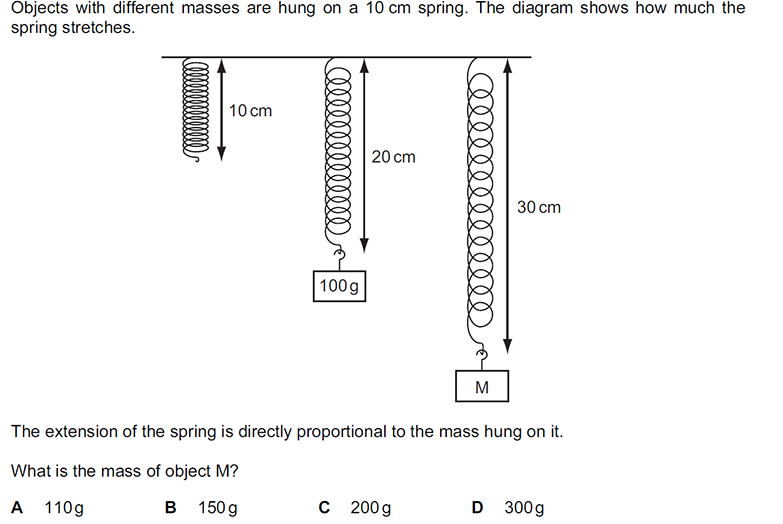The stretching force is directly proportional to the extension if the elastic limit is not exceeded.

Here k is constant, known as spring constant. Its value is different for different materials.
Experimental Arrangement
Set up the retort stand, bosses, clamps, half metre ruler, elastic spring and loads as shown in the following arrangement.
A simple experiment with loads and spring can be performed in the physics laboratory.
Procedure
- The original length of the spring is measured with help of the ruler.
- A load is added in the hanger.
- The extension is measured. The extension is the increase in length compared to the original length of the spring.
- Extension = stretched length – unstretched length
- The experiment is repeated for a range of loads.
- All results must be recorded in an appropriate table.

Results and Analysis
Graph between extension and force is plotted. Graph of extension against load is a straight line through the origin within elastic limit, and then it starts bending.

Elastic Limit
A spring or a string is said to behave elastically if once the load is removed, the spring returns to its original length. So elastic limit can also be defined as:
"The maximum force that can be applied to a spring without producing a permanent deformation in its shape is known as the elastic limit"
The spring given in figure 1 obeys Hooke's Law because the extension is directly proportional to the load till elastic limit.
Inelastic Behaviour
If the spring is permanently deformed by adding the load, then it will not return to its original size and shape when the load is removed. Hooke's Law is not obeyed in this case. Inelastic behaviour of the material is shown on the graph in figure 2 between point A and B.
Test Yourself1




